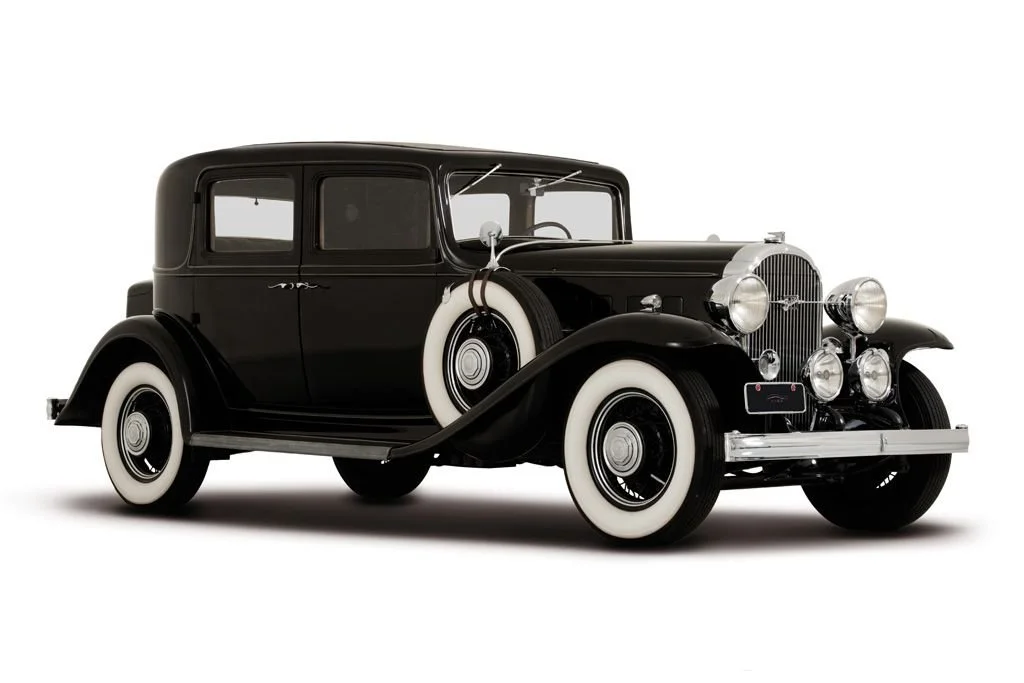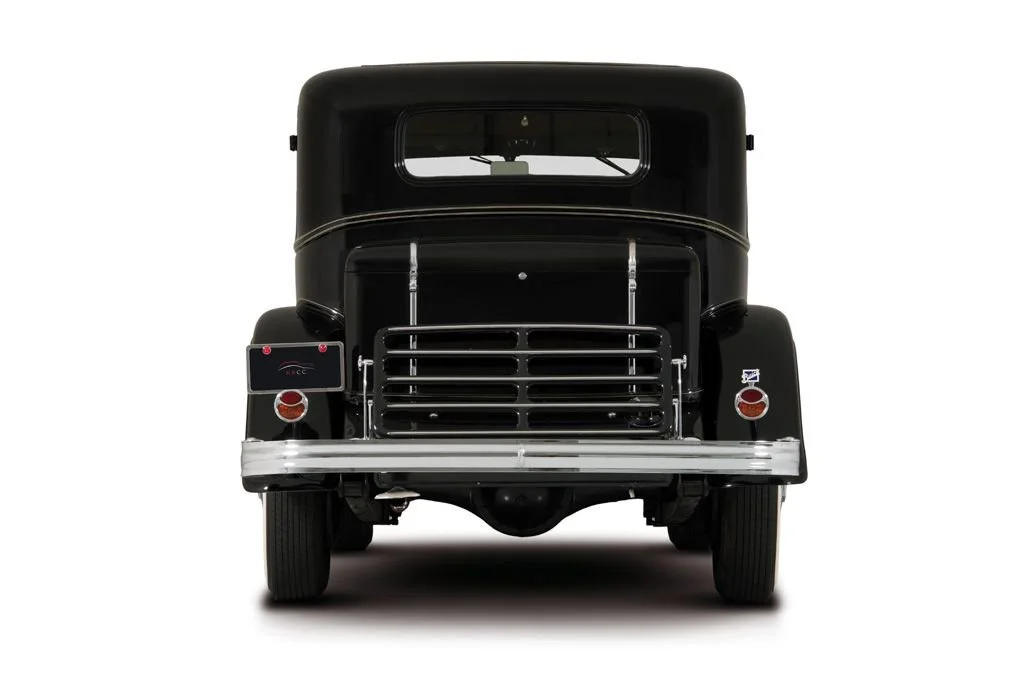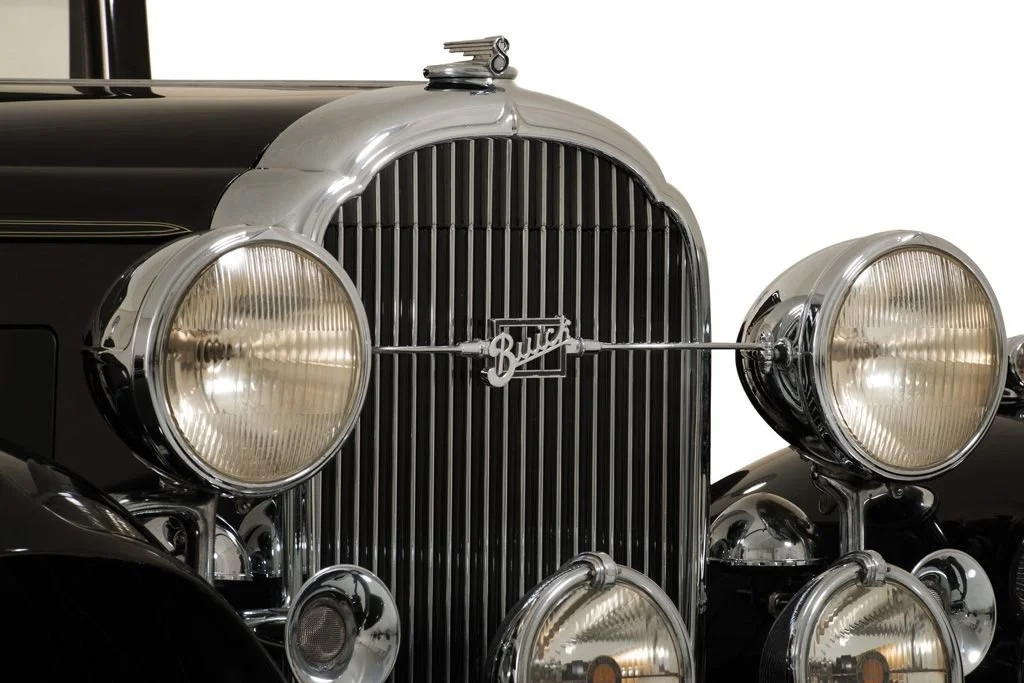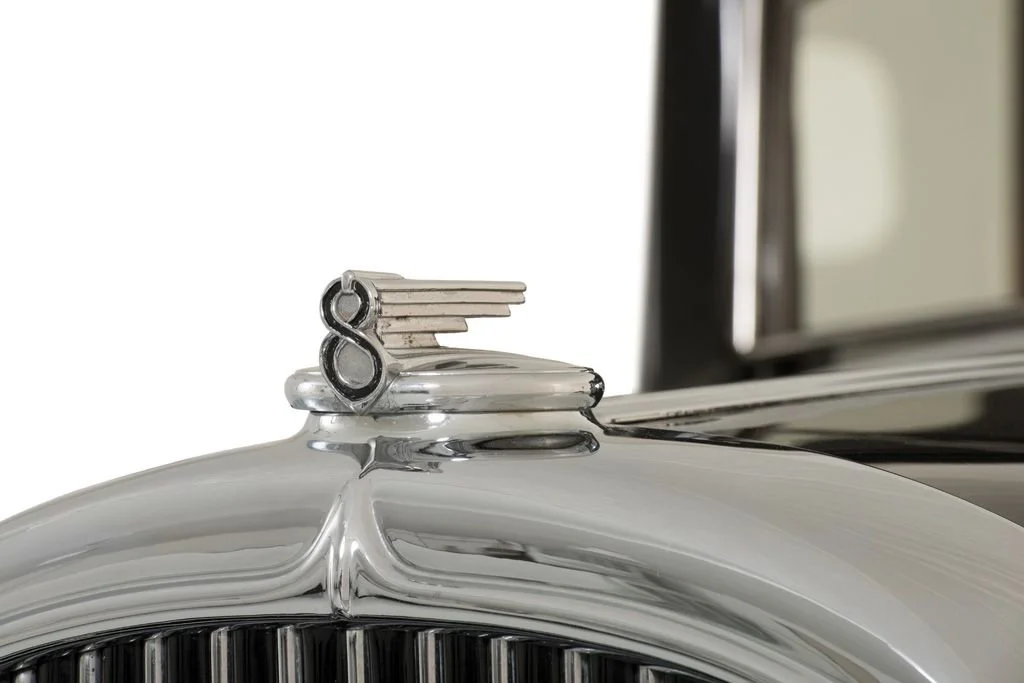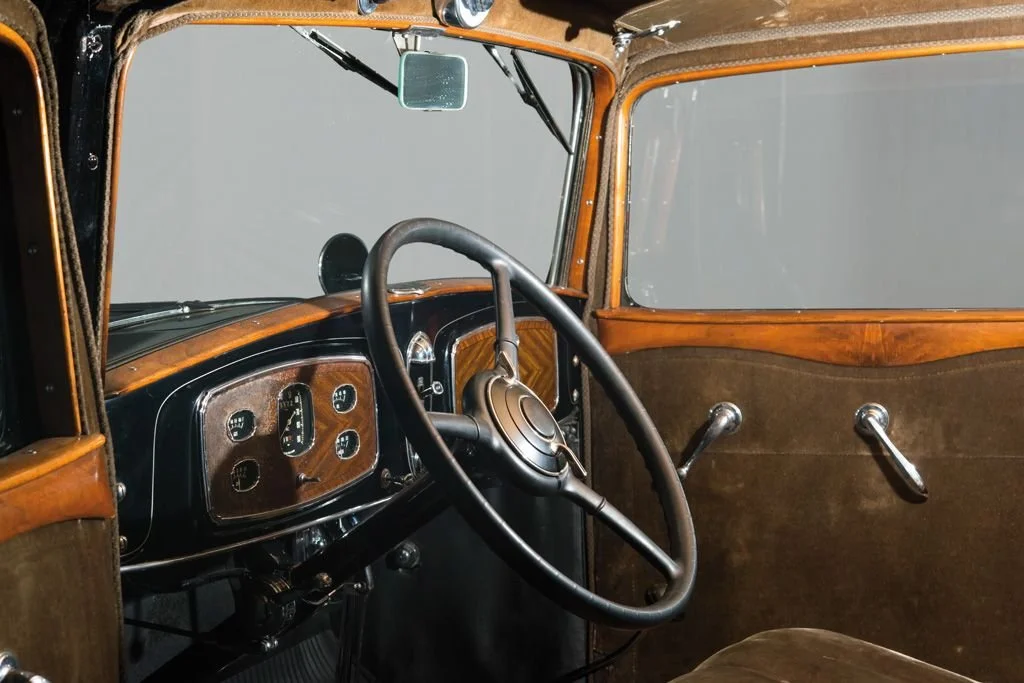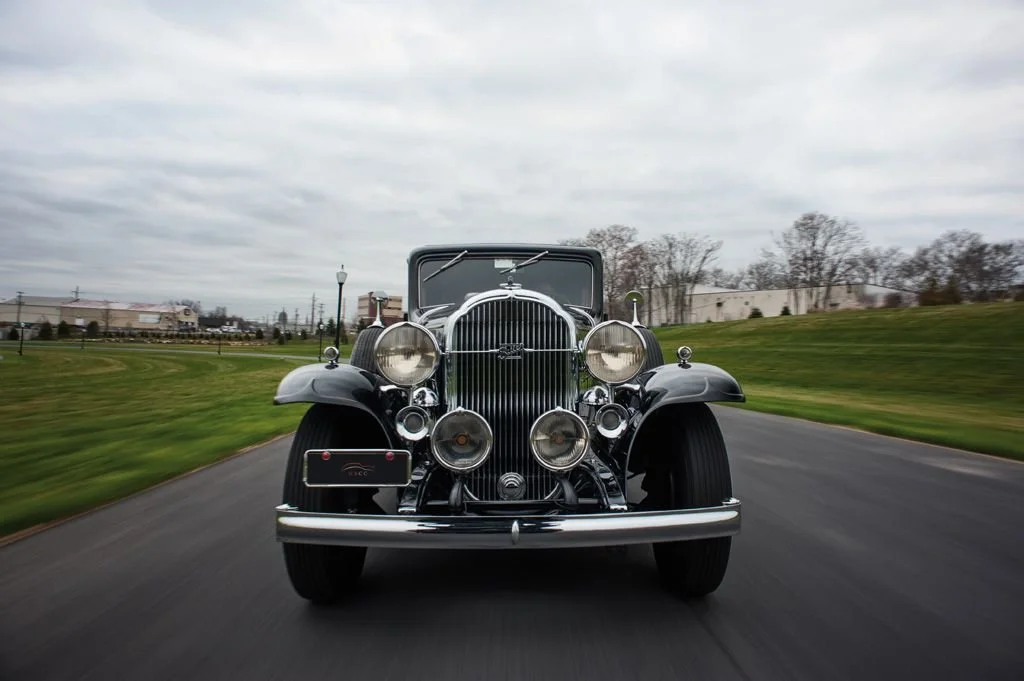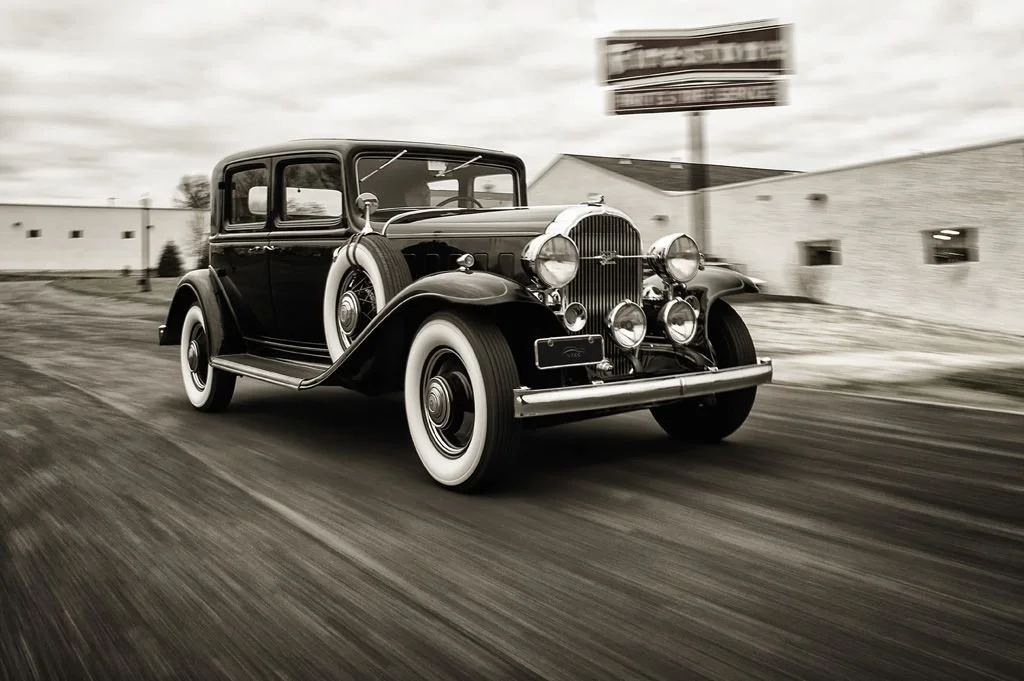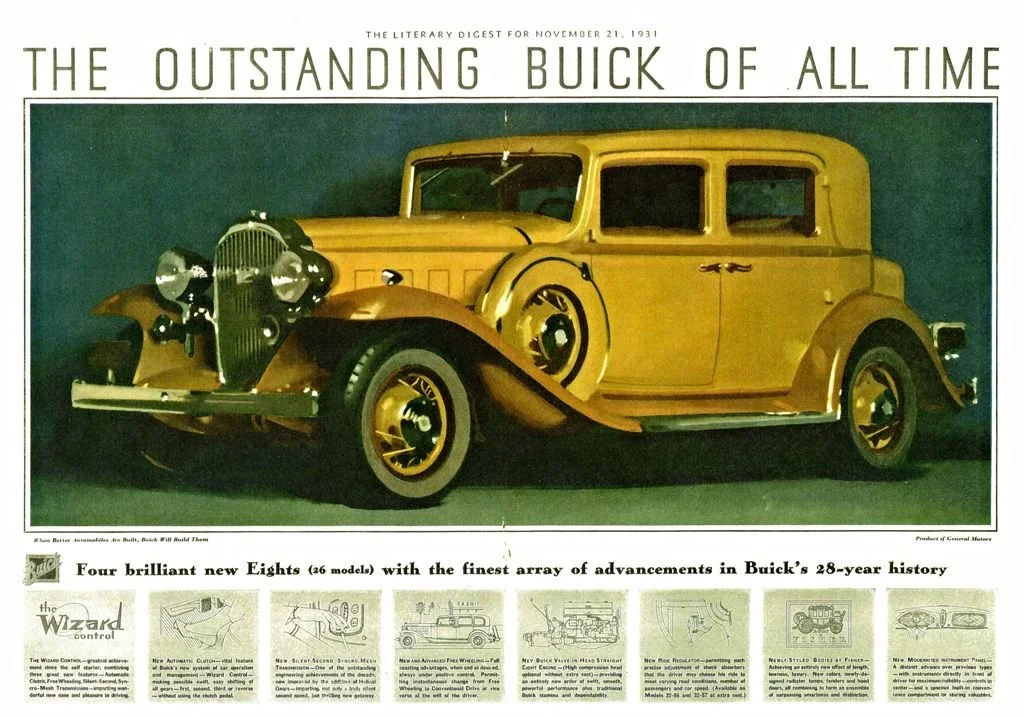-
Purchased from a large collection in the Chicago, Illinois area in 2001, this largely well preserved original example will remain a time capsule car. The car had 74,400 miles when purchased, while a lot for a car of this era, the car was very well maintained and cared for throughout its life.
While the car stands as an example of what a 1932 Buick looked like when new, it also stands as an example of the problems faced with preserving such cars today. The cylinder head of the engine cracked and took years of looking to find a suitable replacement. Now, with a replaced cylinder head and a major service done to the remainder of the engine, the car runs like a brand new 1932 Buick.
-
Company
General MotorsMake
BuickModel
32-91Body Style
4-door Club Sedan, 5 pass
Body Manufacture
Fisher Body Co.
Model year
1932
Wheelbase
134 inches
Length
219.5 inches
Engine
OHV, 8-inline, 344.8 cid
Horsepower
104hp @2800 rpm
Transmission
Sliding gear, 3-speed manualOriginal Base Price
$1,820Brand Production
56,790 model yearThis Car Production
2,237 -
Buick sales continued their downward spiral from the peak in 1926. Yet, ironically, Buick regained their 3rd place industry ranking for production behind Ford and Chevrolet in 1930 and 1931. The entire industry was shrinking under the weight of the Great Depression and each company was fighting for market share of an ever shrinking market.
1932 proved to be a particularly difficult year for Buick. Sales as measured by production fell to just 56,790 for the calendar year and the company fell to 5th in the production rankings. Production was down nearly 80% from the peak! All of this while the company improved the car's styling and added advanced engineering. Slanted windshields, all new front and rear treatments, new hood sides, longer fenders and other styling features couldn’t overcome Buick’s reputation for conservative styling. Likewise, the new Wizard Control, which allowed a driver to shift from second to third gears without the use of the clutch, proved a reliability problem that did not help sales.
Buick had expanded from just two series of cars in 1928 to four in 1931 offering products both down and up the market ladder. At the top of the product line was the Series 90. For 1932, the Series 90 was offered on a new 134” wheelbase chassis. The engine was the 344.8 cubic inch inline-eight cylinder shared with the series 80 cars. The series 90 was offered in 9 body styles starting with the $1675 Sport Phaeton to the top of the line $2055 Limousine.
The most popular of the series 90 cars was the all new model 91 four-door Club Sedan priced at $1,820. This five-passenger sedan featured a rear seat placed ahead of the rear axle allowing space for an integrated trunk at the rear of the car. A trunk as part of the body, as opposed to a separate piece of luggage mounted on a rack at the rear of the car, was a new innovation. Buyers clearly preferred this option with 2,237 cars finding buyers as opposed to the traditional car with no integrated trunk that found just 1,485 buyers. While both figures were astoundingly low, Buick only produced one body style that managed to exceed 10,000 units in 1932 with most of the 26 combinations of body and series resulting in only a few thousands of each produced.

